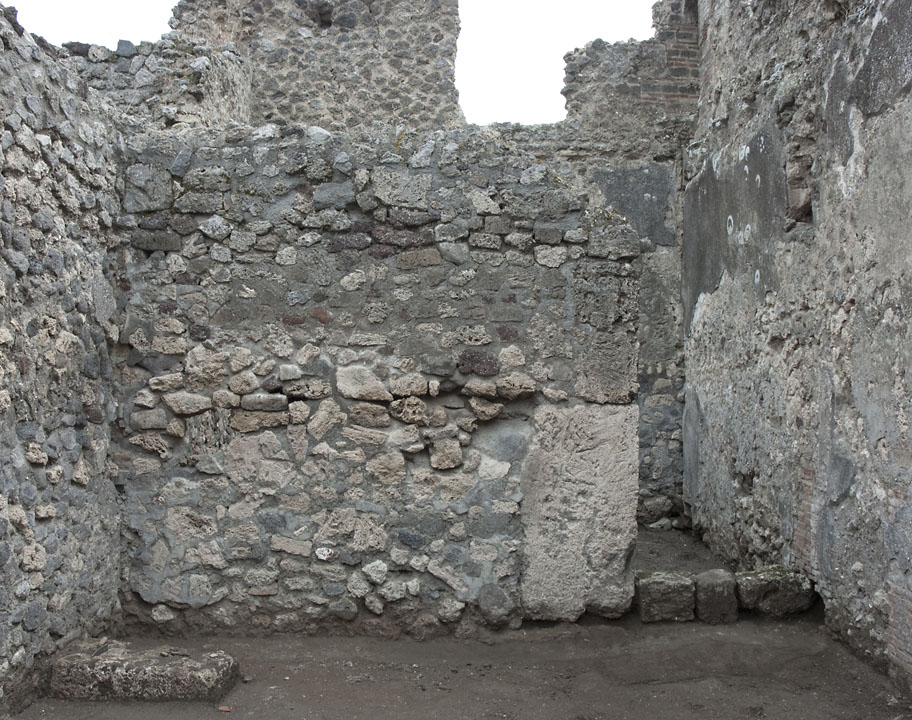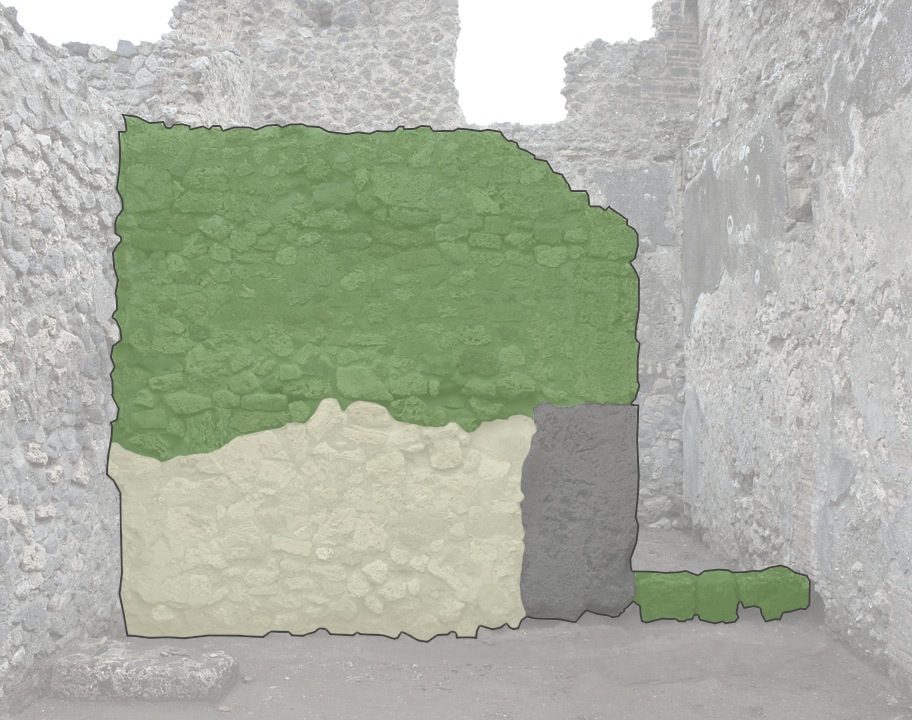East Wall
Description
Mats Holmlund
The wall is circa 4.00 m wide and 3.10 m high at its highest point, and can be said to consist of four parts: The first stretches from the north corner and 2.30 m southwards, and from the floor level until circa 1.40 to 1.50 from the ground. The second stretches from the north corner to the doorway, but starts circa 1.40 to 1.50 from the floor level and continues to the top of the wall. The third part consists of the lower part of the doorpost of the doorway into room 2, and the fourth is the threshold of the doorway. The first part of the wall is constructed in opus incertum and consists mainly of limestone, some lava and some spolia. The second part is a modern reconstruction that is made up of lava, limestone, cruma, tufa, and modern mortar. The doorpost consists of one large limestone block in opus quadratum-style that is 0.65 m wide and 1.40 m high. The fourth part, the threshold, consists of three limestone blocks, is circa 1.00 m wide and between 0.25 and 0.27 m high. The threshold is also a modern reconstruction.
The door is 1.00 m wide and approximately 2.00 m high (from the threshold to a hole in the southern part of the wall).
The first limestone block of the doorpost is in situ, while the other ones are part of a modern reconstruction. However, the matching width of the three additional blocks with the bottom limestone block (0.42 to 0.43 m wide) and overall height of the doorpost (aligning with the hole of the missing, original, lintel in the south wall) indicates that the blocks originate from the doorpost.
There are some spolia in the wall. Circa 0.70 m from the north corner and 0.25 m from the ground, there is a piece of tile that measures 0.17 by 0.04 m, and approximately 1.15 m from the north corner and 0.45 m from the floor level, there is a piece of cocciopesto floor with its surface side facing the room. Another piece is located 0.20 m from the north corner and 0.80 m from the floor. There is also a round metal bar stuck inside of the core of the wall by the largest (bottom) limestone block, approximately 1.35 m from the floor level, which indicates where the reconstructed part of the wall begins.
The mortar of the incertum part of the wall is for the most part obscured by modern light grey mortar, but when visible, it seems to be of the usual yellowish grey kind that contains grains of lava and limestone. The mortar of the modern, reconstructed part of the wall is dark grey and contains grains of lava. The original mortar of the quadratum part of the wall is of the same kind as in part one, while the threshold, for the most part, is held together by soil. On the crest of the wall there is a layer of modern mortar that has been applied it to prevent the stones at the top of the wall from falling down. The mortar of this layer is dark grey.
There are no areas of plaster remaining on the wall.


